Baths of Caracalla [Guide]
On my recent trip to Rome, I took an unexpected visit to the Baths of Caracalla. Of all the archaeological attractions in Rome, this one stood out the most for me. While the Colosseum, Roman Forum and Palatine Hill were all absolutely mind-blowing, nothing quite prepared me for the baths. They are the ruins of one of the largest and most impressive thermae in Rome and they are just out of this world! It is so big that it is almost unbelievable that the site could accommodate 1,600 bathers at one time and that it also has a stadium and a library! It is so beautifully well-preserved that with a pinch of imagination I was back in ancient Rome; bathing in the public baths, socialising in the sauna and relaxing in the library.
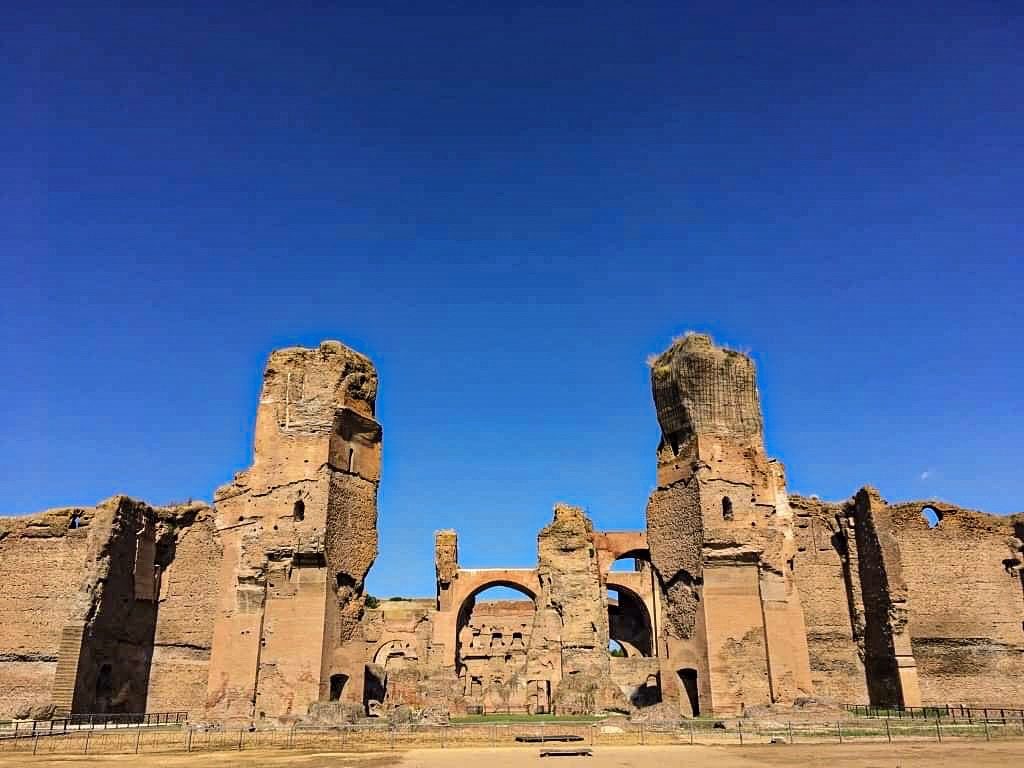
Historical Overview
The Baths Origins
The construction of the Thermae, meaning public baths, began during the reign of emperor Septimius Severus in 206 AD and completed by his son emperor Caracalla between 212 and 216 AD. Originally the complex was over 40 meters in height and covered an area of 100,000 meters squared. In some places, we can just about see this as the walls are still around 30 meters high. Walking around this large site definitely suggested to me the original splendour of the Baths of Caracalla. It was easy to imagine the original marble walls and the valued works of art. While also seeing why the baths were a favourite pastime for the Romans!
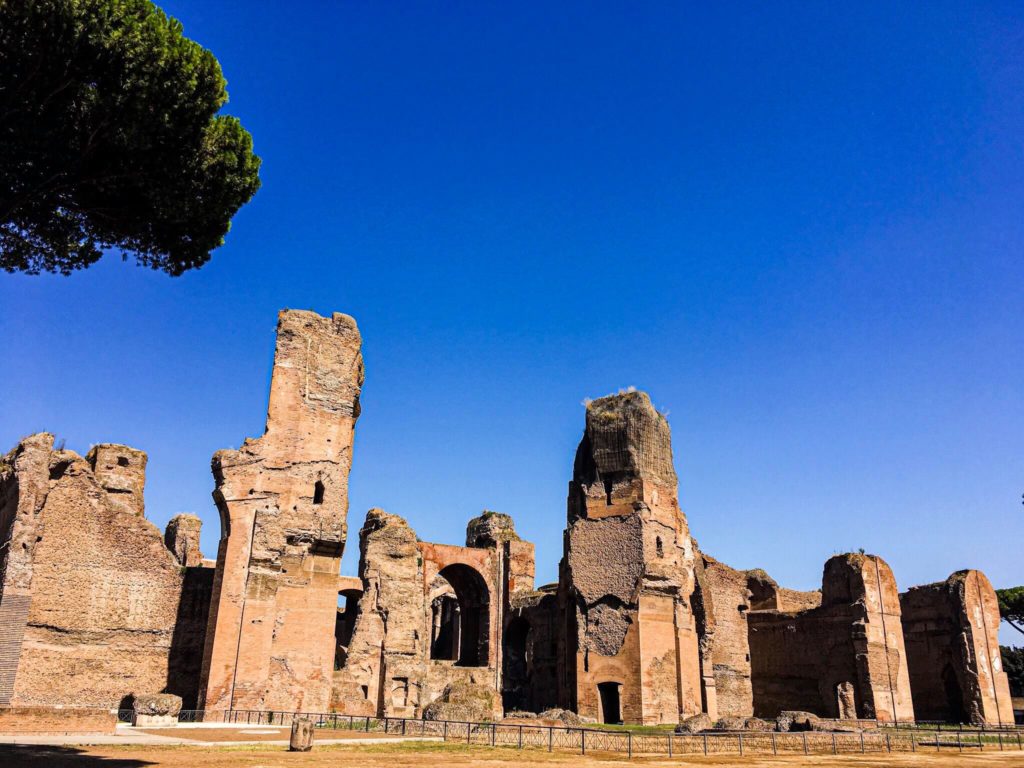
The Social Significance of the Baths of Caracalla
The Baths of Caracalla also speaks of the importance of the baths in society. Indeed, the sheer scale and opulent artwork clarified that the baths were not only a place for Romans to maintain their hygiene. But it was also the location to improve their social relations and worship the god Mithras and other pagan divinities in the temple. I definitely felt like I was standing in the hub of ancient Roman activities.
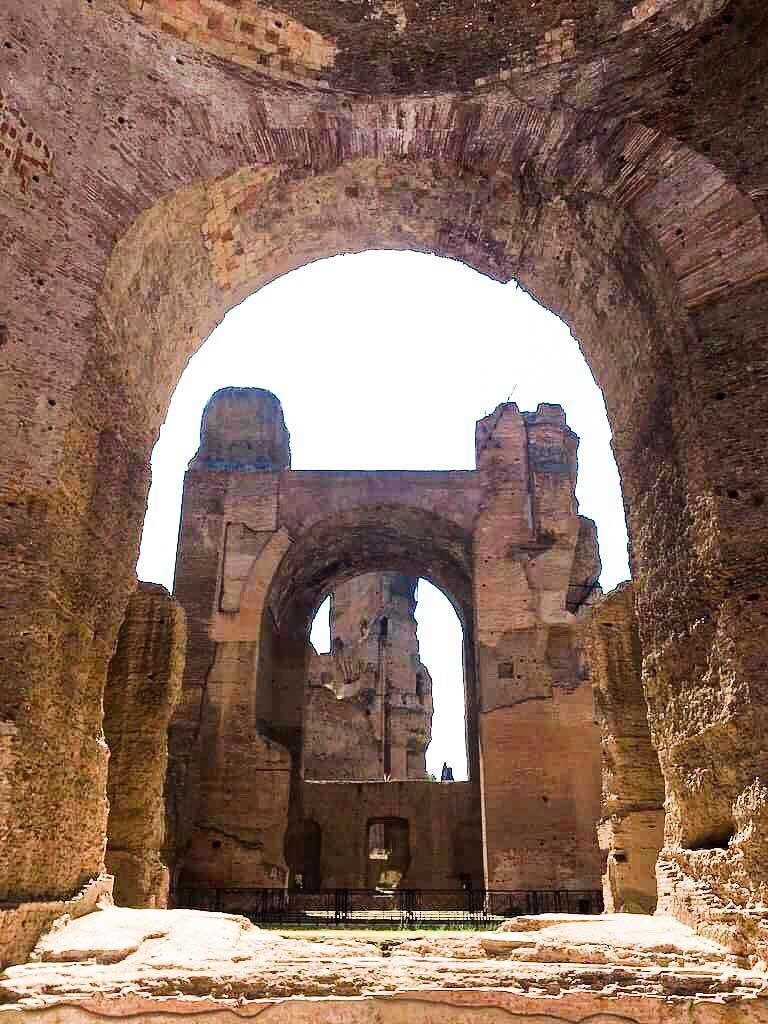
Roman Water Systems
Additionally, the Baths of Caracalla are not just architecturally magnificent but impressively it is home to the Romans effective water supply systems. These systems include heating and drainage systems. The Romans created a system whereby the wood-fired ovens heated the floors and walls of the baths and the water. Talk about being ahead of their time! They brought this water to the bathhouse by a new branch of the Aqua Marcia aqueduct, called Aqua Nova Antoniniana whilst the Baths reservoirs guaranteed additional water supply.
The End of the Baths of Caracalla
Despite remaining in operation for over 300 years, the Baths of Caracalla was closed by 537 AD. Vitiges of the Ostrogoths destroyed the aqueducts during the Gothic War. Sadly, the sculptures and materials decorating the baths were plundered, while the remaining building fell to ruin after an earthquake shook the building in 847 AD. Despite the passing of centuries and the lootings, the structure of the complex, a large part of the walls and some mosaic artwork remain. Therefore, visiting the baths is a phenomenal way of submerging yourself in the splendour of ages past!
What Can You See in the Baths of Caracalla?
There is so much to see in the Baths of Caracalla! I’ve included a map of the site to show you just how much is on offer!

The Main Building
- V: Hall
- A: Dressing Room
- L: Sauna
The Outer Building
- S: Aula
- B: Library
- ST: Stadium
- CS: Cisterns
- a: Aqueducts
- s: Underground
- T: Shops
- m: Mithraeum
The Basilicae Thermarum
In the northwest and southeast, the Basilicae Thermarum, otherwise known as the entrance halls, are about 50 by 20 meters. According to some archaeologists, these halls would have been used by athletes and served as a gym. The mosaics that once graced the hall strongly support these arguments. Discovered in 1824, the mosaics are now housed in the Vatican Museums, but they depict all kinds of professional athletes. The athletes can be identified by their hair gathered into a cirrus, the characteristic knot at the nape of the neck. And it is also possible that a few of these athletes were actual Roman athletes because a few have names inscribed into them.
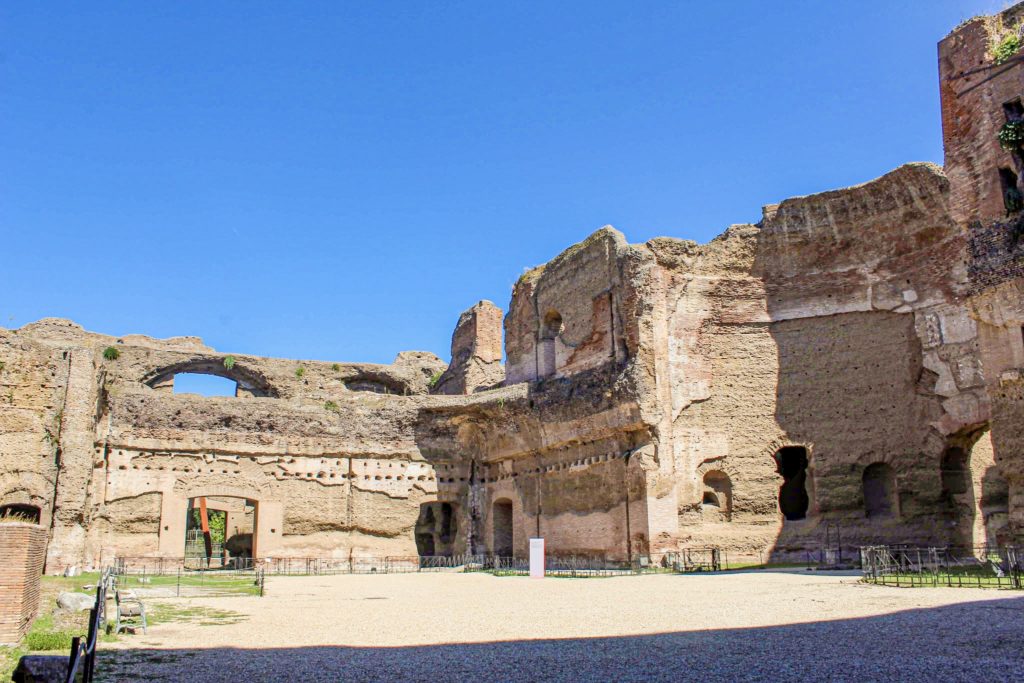
The Swimming Pool
After the Romans visited the gym, they would often go to the Olympic-sized swimming pool, known as the natatio. This pool was 50 meters and is definitely the most astonishing structure in the bathing complex. Before entering the swimming pool, you will see two large entrance vestibules which are adorned with grey and red granite columns surmounted by a marble lintel. Inside one vestibule, you’ll see a well-preserved mosaic floor made from green marble!
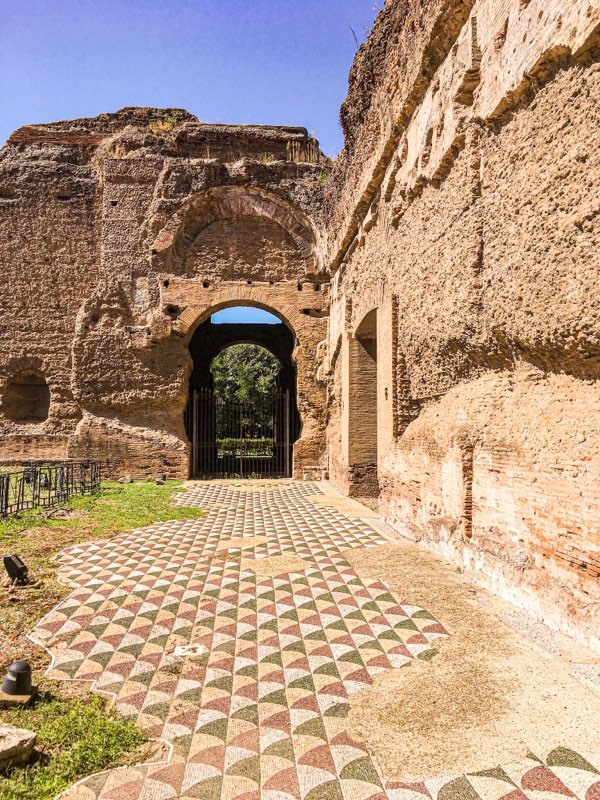
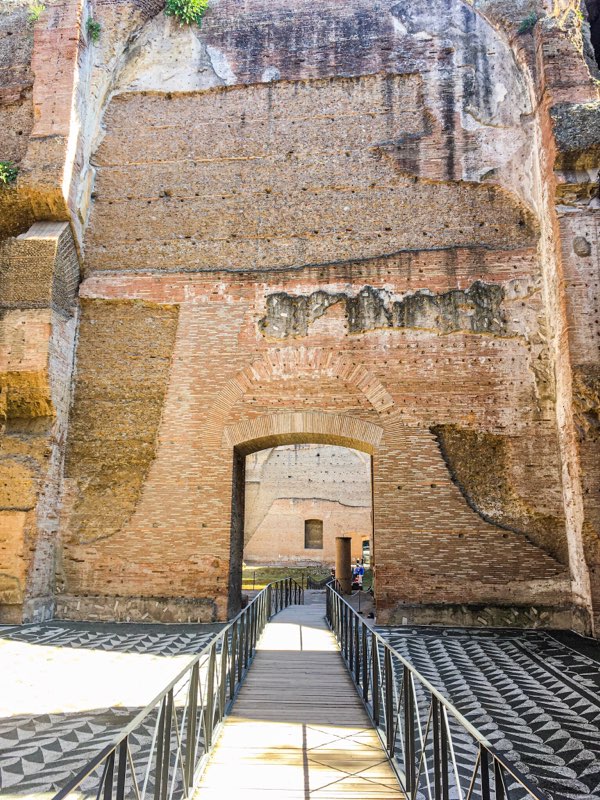
After passing through the vestibules, you’ll be astonished by the grandiose of the natatio. Originally, the north facade was divided into three parts by gigantic grey granite columns. In each of these, there were six niches for statues. Whilst the statues are long gone, there are remains that show where they would have been placed. Additionally, the conduits for the water that poured into the swimming pool can also still be seen in the line of these niches. But more impressively, the size of the chamber is 50 by 22 meters and you can also see that the entire bath was raised on a platform. This platform was 6 meters high and it allowed room for furnaces to heat the pool.
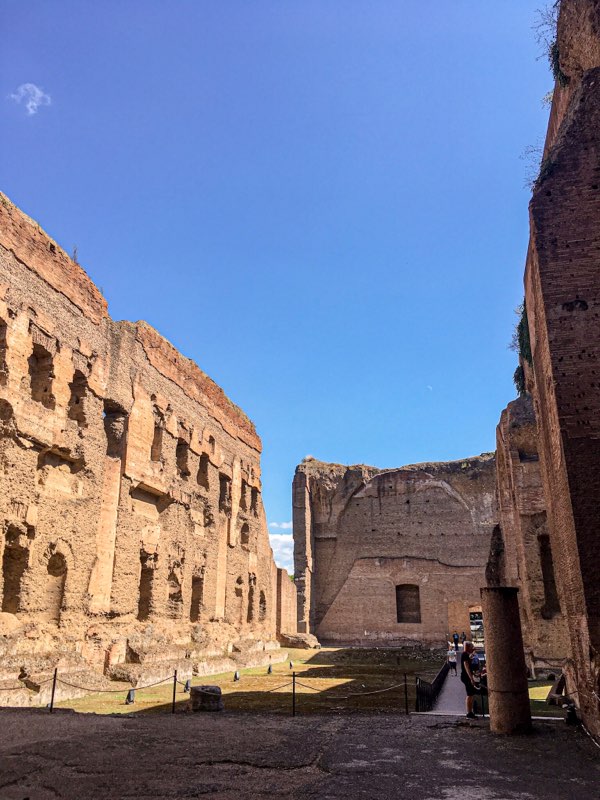
Three Bathing Rooms at the Baths of Caracalla
As well as the gigantic swimming pool, the Baths of Caracalla were divided into three bathing rooms. These rooms comprised the frigidarium, a cold pool, the tepidarium, a lukewarm pool, and the calidarium, a hot pool. The frigidarium is located in the middle of the building and flanked by two massive zones called Palaestra which were gymnastic areas open to the sky. It served as a meeting point for the visitors. From here, the visitors would then retire to one room or another on the thermal complex or to the swimming pool connected by a series of waterfalls. While the Romans positioned the tepidarium and calidarium close to the furnaces to heat their walls and floors.
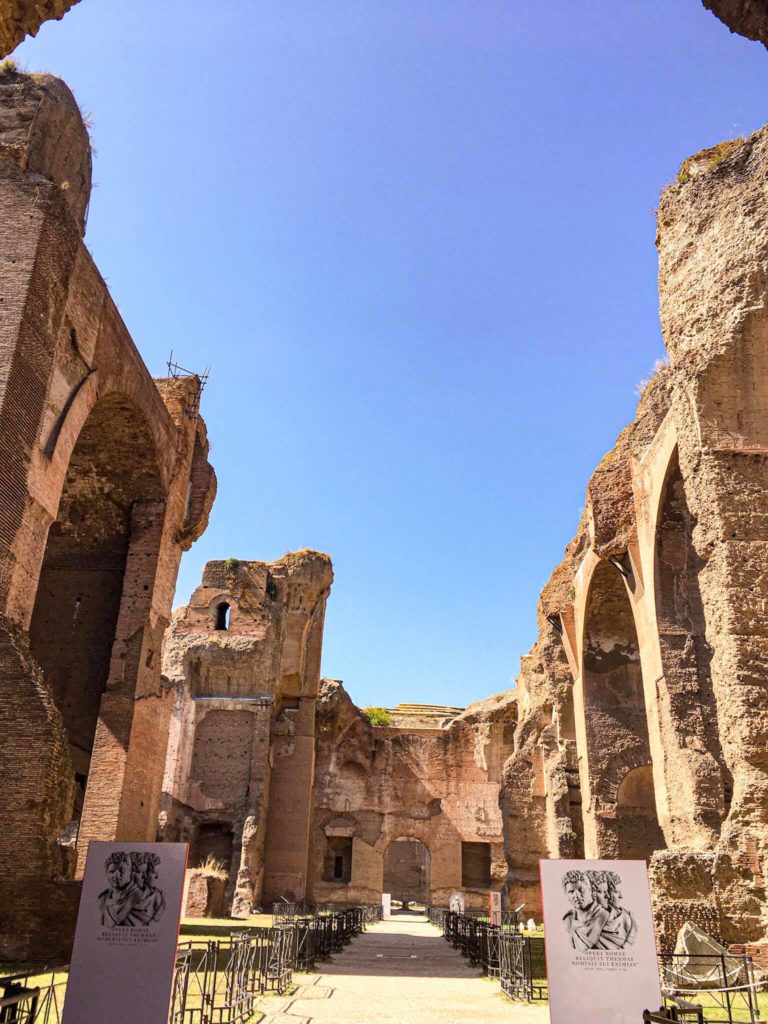
The Spaces of a Cosmopolitan Culture: The Library
Outside of the baths stands the incredible library. The chamber is 38 by 22 meters! Again, showing the Romans love of large structures! The library comprises three walls with 32 niches. These niches housed the wooden armaria (closets) designed to contain the volumina, papyrus rolls equivalent to our books. Like other public libraries in Rome, there are two separate and equal-sized rooms; one for Greek language texts and one for Latin language texts. In the centre of this space stood a larger niche that had the statue of Minerva, the goddess of wisdom. This goddess can also be found in the Roman Baths in England, showing how the Roman’s religious devotion never wavered during their imperial conquests. The statue of the goddess Minerva and the books in the Baths speaks of the prominence and power that religion and learning played in Roman’s lives.
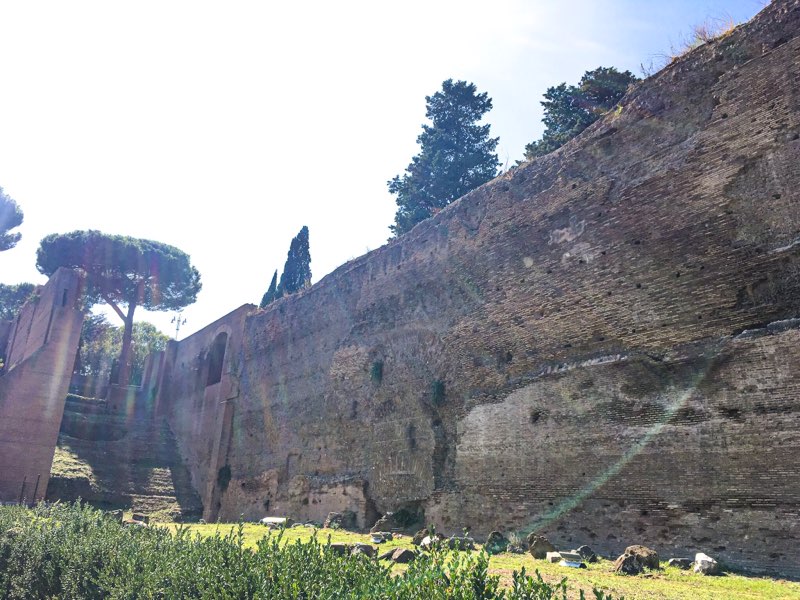
Architectural Celebration of the Emperor
The architectural decoration at the Bath of Caracalla complex has an ideological content embedded within it. The architecture highlights the policy of the emperor who commissioned it. The richest spaces in this respect were the two Palaestrae which were full of symbols unmistakably alluding to Jupiter. This is significant as the emperor was Jupiter’s representative on earth. There were also eagles supporting the corners of the abacus. This is also ideologically significant because eagles were sacred to the god and an emblem of the empire.
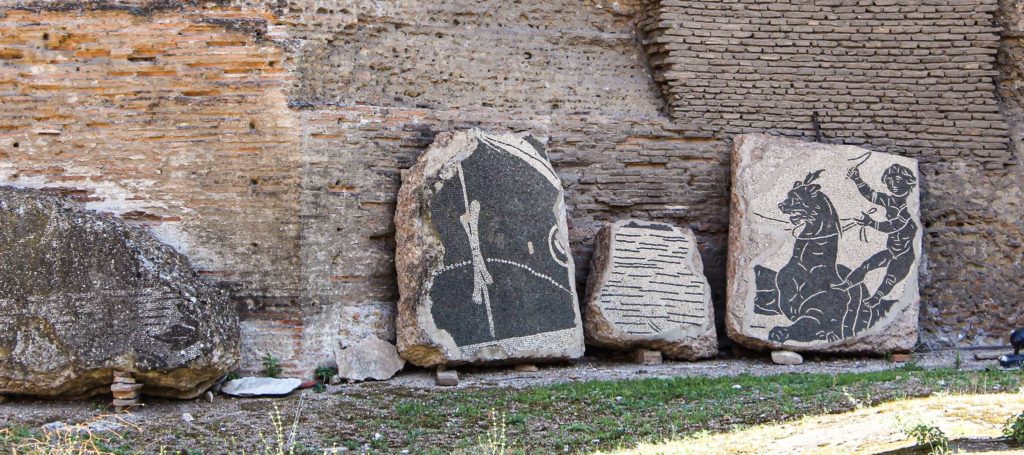
There are also fragments that display a battle scene between a Germanic warrior and Roman legionary. Due to the sparseness of these fragments, historians cannot identify which war this was. But it might have been Septimius Severus’ campaign in Britain in 208-211 AD or Caracalla’s expedition in Raetia and Germany in 213 AD. Despite the uncertainty, the architectural decorations are clear symbols of and explicit references to the Roman emperor. So, we can certainly say that the Baths of Caracalla were the forum of the Severan dynasty!

The Baths of Caracalla’s Hypogeum & Furnace Systems
Until recently it has only been possible to visit the above ground remains. However, following extensive renovations, the network of immense and secret underground tunnels is now accessible to the public!
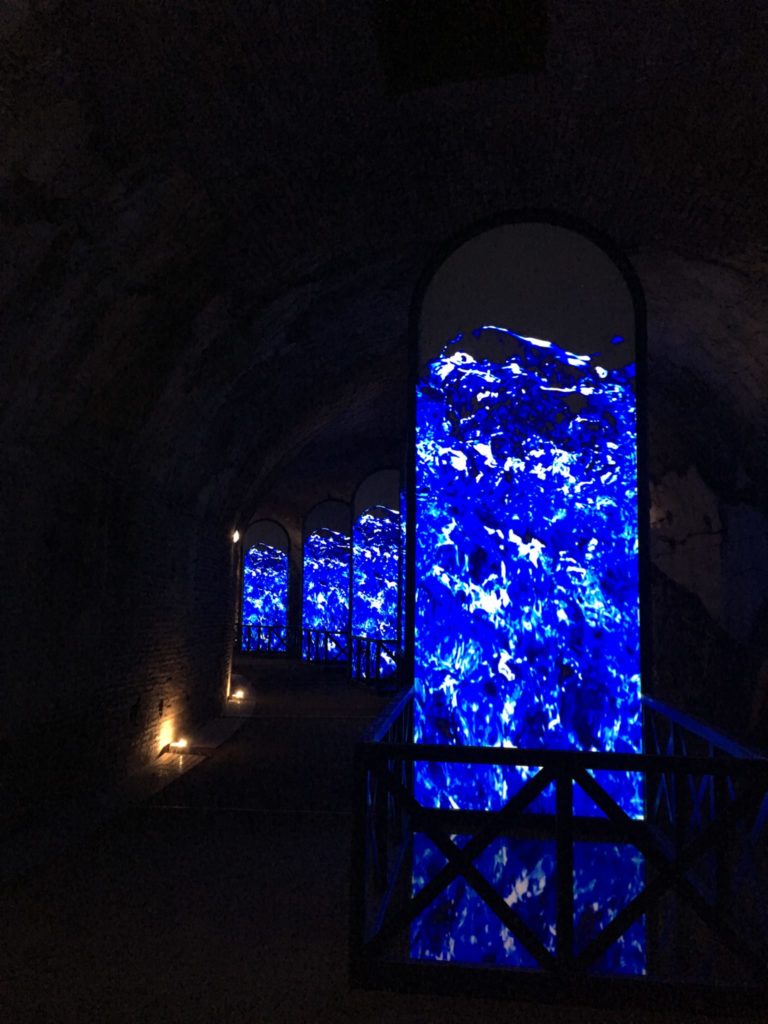
As soon as you arrive underground, you will be welcomed by an exhibition. This exhibition shows some of the most extraordinary pieces of architectural decoration left at the Baths. Then you can follow the path to find the technological heart of the Baths, including the calidarium which displays the whole heating system. It also shows 24 of the original furnaces at the baths.
Apparently, the furnaces consumed on average 10 tons of wood per day. They kept this in the parts of the tunnels used for storage ventilated by large skylights. Walking around these underground passages, it is easy to imagine the laborious work of the slaves. They had to continuously stoke the fires in all the boilers.

The Baths of Caracalla Tickets & Opening Hours
There is a small admission charge to enter the Baths of Caracalla. For only €5 you can see all the above! In my opinion, it is worth it! The baths are open daily for the full day, except on Mondays when they are only open in the mornings.
I can’t stress enough how incredible the Baths of Caracalla are. Nowhere before has offered such archaeological insight into the Romans daily lives. It is a privilege to experience the underground heating system and it is nothing short of phenomenal.
Have you been to the Baths of Caracalla before? If you loved my post, please leave a comment!

![Florence Cathedral [Guide]](https://jadebrahamsodyssey.com/wp-content/uploads/2019/12/IMG_7442.jpg)
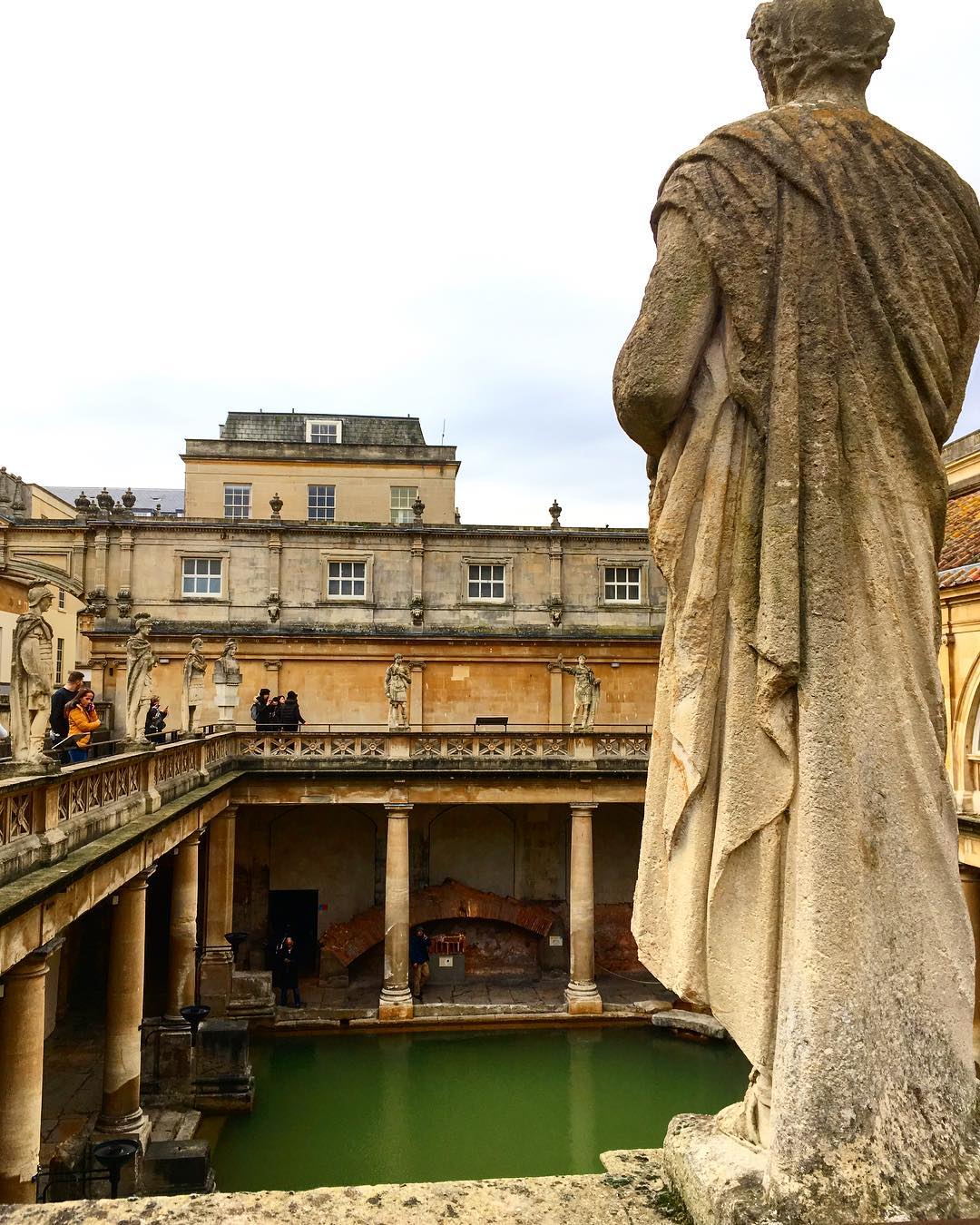

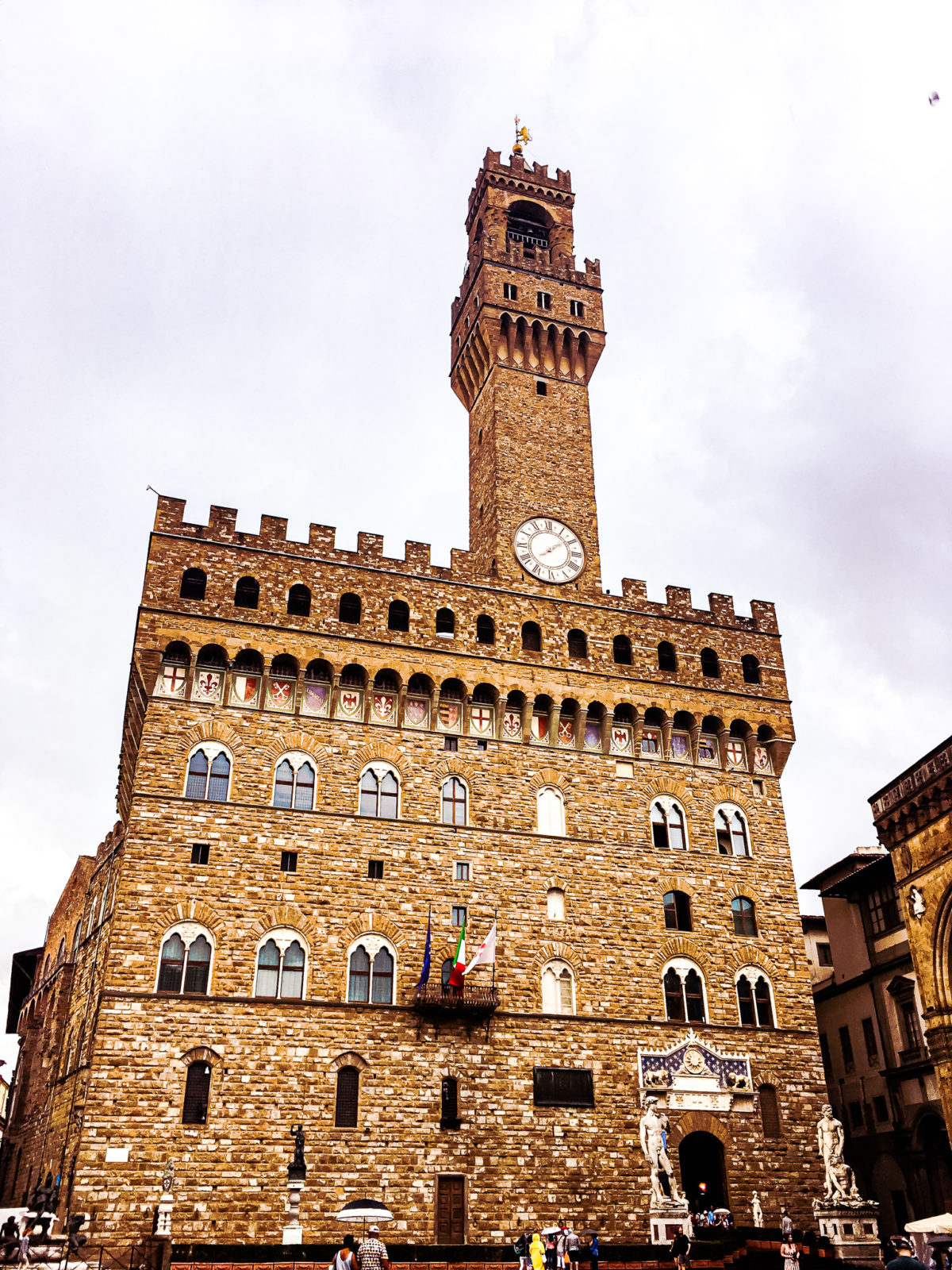

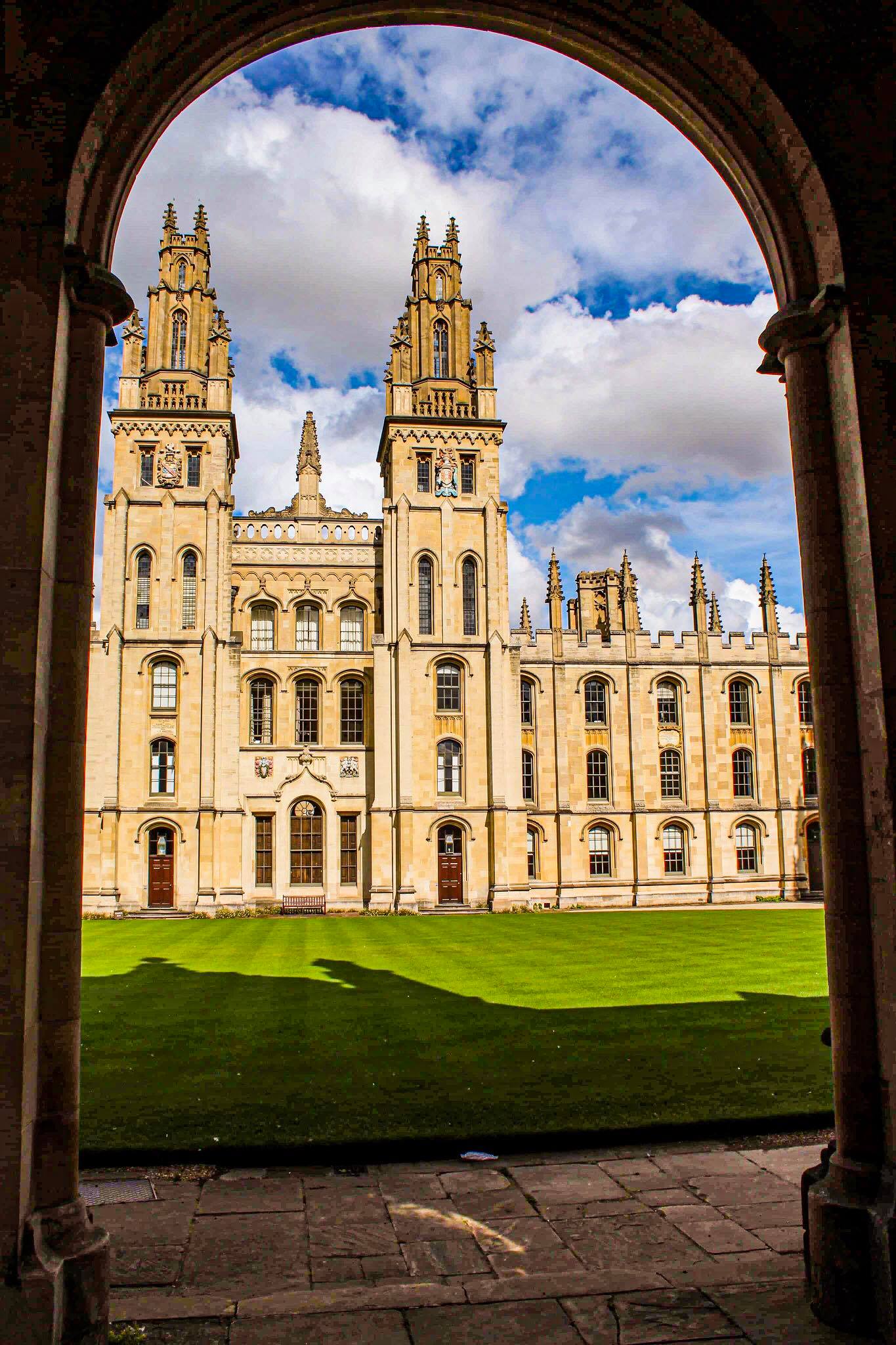
I had honestly never heard of this place, so thank you for this! The first time I was in Rome, however, I went to Ostia Antica for a day which was also very impressive so I can understand the feeling of being somehow transported back in time.
You’re very welcome! I haven’t been or heard of Ostia Antica, so I’ll have to put that on my bucket list. Thank you 🙂
Wow this looks amazing, I will definitely add this to my bucket list and pin it for when I go 🙂
Shannon x
http://www.shanylou.co.uk
instagram.com/shanyloublog
Thank you for commenting! I am so glad you like the Baths of Caracalla. They’re truly a hidden gem in Rome and deserve more attention! 🙂